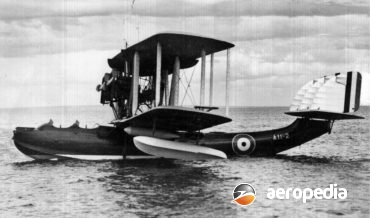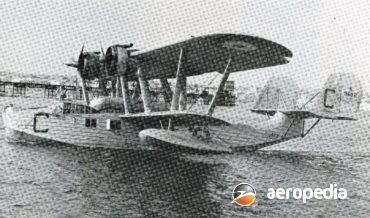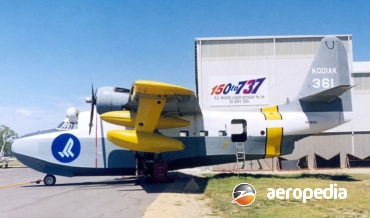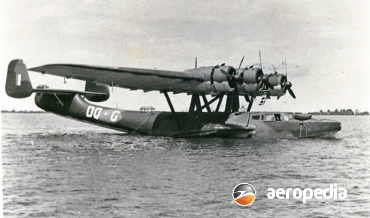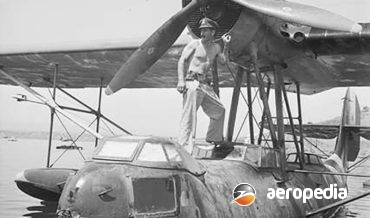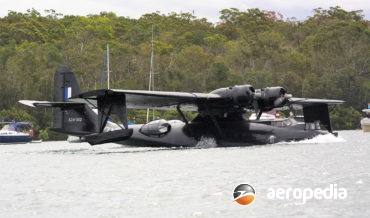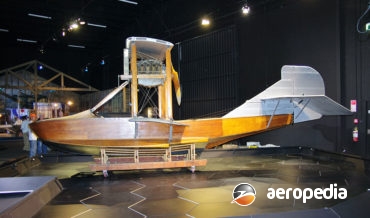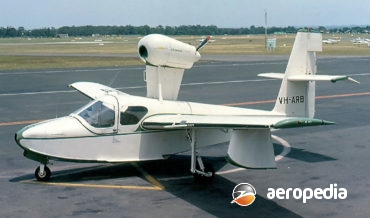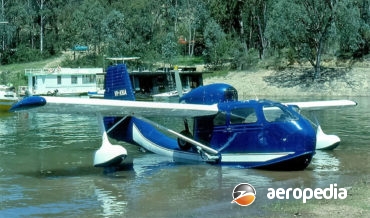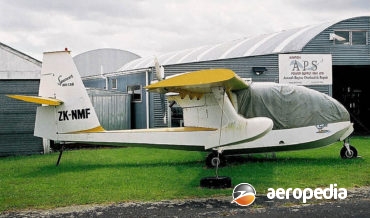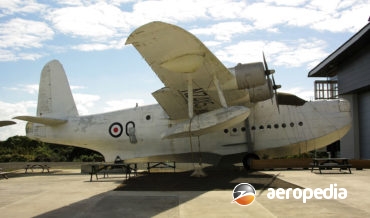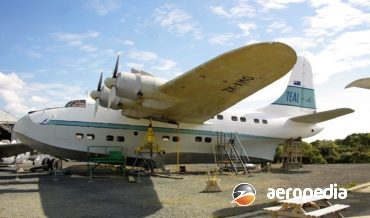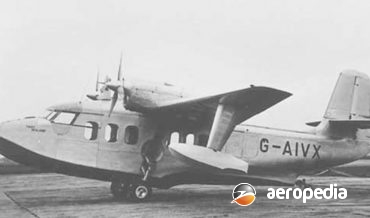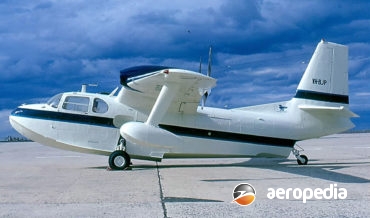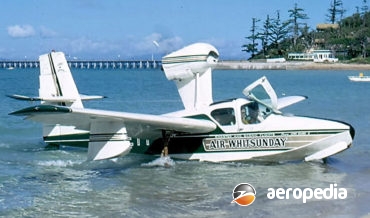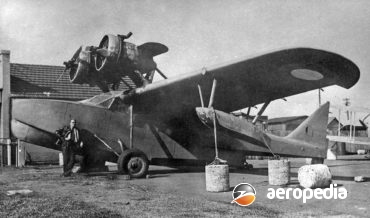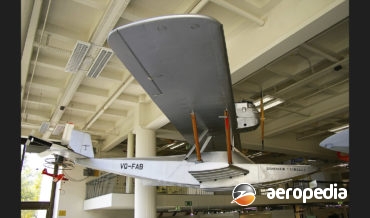All Contents
Contents
The Southampton was designed as a patrol seaplane to replace the Felixtowe F.5, six aircraft being ordered in 1924 before the prototype was built.
David C. Eyre
- May 19, 2019
The London was built to a British Air Ministry specification for a general purpose coastal patrol flying boat of robust but simple construction.
David C. Eyre
- May 19, 2019
In 1944 Grumman commenced design of a successor to the successful Goose amphibian and, known as the G-64 Albatross, the first of two prototypes flew on 24 October 1947.
David C. Eyre
- May 19, 2019
The DO 24 was a tri motor, high-wing all metal construction cantilever flying boat with sponsons, the latter containing much of the fuel which was fed to gravity tanks in the wings.
David C. Eyre
- May 19, 2019
In 1931 the Italian Company Cantiere Novale Triestino (CANT) was reorganised as Cantieri dell’Adriadtico (CRDA) and Filippo Zappato returned from working in France to become Chief Engineer.
David C. Eyre
- May 19, 2019
The PBY Catalina was designed by Consolidated-Vultee Aircraft Corporation, which received an order from the US Navy on 28 October 1933 to build an experimental patrol aircraft designated XP3Y-1. The prototype (c/n 9459) flew for the first time on 21 March 1935 at Hampton Road, powered by two 615 kw
David C. Eyre
- May 19, 2019
The Catalina was required in large numbers for anti-submarine patrols, bombing and reconnaissance duties, amongst other things, and the type was manufactured for the US Navy and other operators .
David C. Eyre
- May 19, 2019
The Curtiss Seagull was a civil variant of the Curtiss MF flying boat trainer produced from 1918, the civil aircraft having a 119-kw (160-hp) Curtiss C.6 six-cylinder in-line engine in place of the V-8 unit in the military variants.
David C. Eyre
- May 17, 2019
The skimmer was a successful foray into the production of an amphibian for private use by the Colonial Aircraft Corp.
David C. Eyre
- May 17, 2019
Colyaer SL has been building light sport aircraft for some years, the first aircraft produced being the Martin, which was fully certified and was a two-seater with a fixed tricycle undercarriage, this model becoming available in 1999 and in its later form was known as the Martin 3.
David C. Eyre
- May 17, 2019
The brothers Leo Austin and Vivian Claude Walsh were interested in the aeroplane from about 1910 and at that time purchased materials and built an aircraft which was completed and flown in 1911 but the aircraft was destroyed in an accident.
David C. Eyre
- May 8, 2019
The Widgeon I was a single-engine amphibious biplane constructed with a wooden hull (Queensland maple) designed by Sqdn Ldr L J Wackett in 1923 and built by the RAAF Experimental Section at Randwick.
David C. Eyre
- May 8, 2019
In 1941 the S-12 Amphibian Air Car was built in the United States by Percival H Spencer, he having formed Spencer-Larson Aircraft Corp to build a light amphibian.
David C. Eyre
- May 8, 2019
The Channel was built by the Supermarine Aviation Works Ltd at its Woolston facility at Southampton.
David C. Eyre
- May 8, 2019
The Spencer Air Car, also known as the Amphibian Air Car, was designed by Mr P H Spencer as a four-seat amphibian bearing a strong resemblance to the Republic Seabee, which he also designed.
David C. Eyre
- May 8, 2019
The S.42 was a commercial flying boat designed by Igor Sikorsky to meet a requirements of Pan American World Airways, Juan Trippe, president of Pan Am, requesting in June 1931 designs from six aircraft manufacturers for an aircraft able to span the World’s oceans.
David C. Eyre
- May 8, 2019
The Scion was designed by Short Bros (Rochester and Bedford) Ltd as a light, twin-engine, cantilever monoplane for feeder-line work.
David C. Eyre
- May 8, 2019
The Short S-25 Sunderland was a development of the commercial Short “C” Class flying-boat designed to fulfill a specification issued by the RAF for a four-engine monoplane to serve in the coastal patrol and long-range reconnaissance roles.
David C. Eyre
- May 8, 2019
In 1945 Short Bros flew a variant of the Sunderland flying-bota known as the Seaford I.
David C. Eyre
- May 8, 2019
The Sealand series was designed by Short Brothers & Harland of Belfast, Northern Ireland, as a completely new flying-boat shortly after World War II, being a five to eight seat amphibian powered by two Gipsy Queen 71 engines and a total of 25 examples was completed, ten of these serving
David C. Eyre
- May 8, 2019
The Short Sandringham series was a conversion of the Short Sunderland to meet requirements of airlines for a four-engine flying boat to carry passengers, luggage and freight. The Sandringham I (G-AGKX – ex ML788 - Himalaya) was a former BOAC Sunderland III fitted with Pegasus engines,
David C. Eyre
- May 8, 2019
The S.16 was a passenger carrying flying-boat built in Italy by the Societa Idrovolanti Alti Italia (SIAI) for operations of civil passenger carrying and was powered by a Fiat A.12bis engine.
David C. Eyre
- May 8, 2019
The Piaggio P-136 series of amphibious flying-boats was a produced in Italy during the late 1940s and early 1950s.
David C. Eyre
- May 8, 2019
The Colonial C-1 Skimmer was built by the Colonial Aircraft Corporation in the USA, with the prototype being flown for the first time on 17 July 1948. This three-seat amphibian was powered by a 93-kw (125-hp) Lycoming O-290-D engine, and received its type approval on 19 September 1955.
David C. Eyre
- May 8, 2019
In August 1938 the Imperial Japanese Navy issued an order for a successor to be designed and built to replace the Navy Type 97 Flying Boat Model I, this requiring a cruising range of 7,410 km (4,604 miles), a heavy armament, and the ability to carry two 1,000 kg (2,204
David C. Eyre
- May 8, 2019
To increase the performance and load carrying capacity of what was becoming an old flying boat, a number of persons and organisations looked at replacing the engines and equipment in the Mallard, one of these being Mr R Peterson of Northern Consolidated Airlines in the US, he having obtained c/n
David C. Eyre
- May 8, 2019
The Dolphin was designed by the Douglas Aircraft Co to meet the requirements of civil operators for a twin-engine flying boat, and the prototype, initially known as the Sinbad, flew for the first time at Santa Monica Bay, California, in July 1930.
David C. Eyre
- May 8, 2019
The Dornier Libelle was a light three-seat sporting flying boat built in the 1920s by Dornier Metallbanten at Freidrichshafen and was delivered in some numbers.
David C. Eyre
- May 8, 2019
Recent Comments
Archives
Categories
- No categories
Categories
- No categories
Latest Posts
Newsletter

